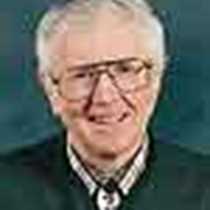Punchbowl Cove, Misty Fiords National Monument
A sheer 3,000 foot wall of granite with clinging banners of mist dominated our morning anchorage after an overnight run from Prince Rupert, B.C., into Southeast Alaska.
Before breakfast two U.S. Customs agents who arrived by float plane checked our passports and left us to savor Punchbowl Cove from Zodiac or kayak.
Rivers of ice more than 4,000 feet thick chiseled these deep dark fiords. Landing beaches are rare, here, so our Sea Lion crew assembled a launching float astern for the kayakers.
Our keen birders were first on the bow before the morning activity. They identified Barrow’s goldeneye which nest on the surrounding lakes. A splendid drake Harlequin duck was stationed on a boulder near a dashing stream where his mate was probably incubating a clutch of eggs hidden in a cavity among the rocks.
The surprise and mystery of the morning was a lone red-throated loon joined by four ducklings that swam out from the sheltering shore. It turned out these were disobedient common merganser babes. Their mother stayed hidden with the other four ducklings and clucked softly to the strays.
Naturalist Sharon Granger and her raft of guests arrived as a pair of crows attempted to snatch these morsels. The hen merganser charged from hiding, drove the crows away, reassembled her brood of eight and led them all into cover.
On the few tiny alluvial fans where streams entered the cove was a display of shooting star. The long leafless stems lifted their deep pink flowers above the sedge cover. The petals sweep back from a yellow and dark purple “center” to give this shooting star effect.
All the surrounding granites cliffs were part of a great pluton of igneous rock which crystallized out of molten silicate or magma 12 to 18 miles deep beneath the earth surface. Then it was uplifted and sculpted by glaciers.
We cruised more of the Misty Fiords after lunch, returned to the main passage, Behm Canal, and saluted New Eddystone Rock in passing.
This strange spire, an old volcanic plug, rears 234 feet above mid canal and has a shroud of green shrubs and scraggly spruce. A pair of bald eagles used the notched tip of Eddystone as their watch tower.
Capt. Geo. Vancouver of the Royal Navy was so taken by this strange pillar he illustrated it in his journal while searching here in 1793 for the long desired Northwest Passage. The British Parliament offered 20,000 pounds sterling for its discovery.
Vancouver named it after Eddystone Rock and Lighthouse in Plymouth, England. It was the last visible bit of home as he sailed half-way around the world to chart this coastline.
A sheer 3,000 foot wall of granite with clinging banners of mist dominated our morning anchorage after an overnight run from Prince Rupert, B.C., into Southeast Alaska.
Before breakfast two U.S. Customs agents who arrived by float plane checked our passports and left us to savor Punchbowl Cove from Zodiac or kayak.
Rivers of ice more than 4,000 feet thick chiseled these deep dark fiords. Landing beaches are rare, here, so our Sea Lion crew assembled a launching float astern for the kayakers.
Our keen birders were first on the bow before the morning activity. They identified Barrow’s goldeneye which nest on the surrounding lakes. A splendid drake Harlequin duck was stationed on a boulder near a dashing stream where his mate was probably incubating a clutch of eggs hidden in a cavity among the rocks.
The surprise and mystery of the morning was a lone red-throated loon joined by four ducklings that swam out from the sheltering shore. It turned out these were disobedient common merganser babes. Their mother stayed hidden with the other four ducklings and clucked softly to the strays.
Naturalist Sharon Granger and her raft of guests arrived as a pair of crows attempted to snatch these morsels. The hen merganser charged from hiding, drove the crows away, reassembled her brood of eight and led them all into cover.
On the few tiny alluvial fans where streams entered the cove was a display of shooting star. The long leafless stems lifted their deep pink flowers above the sedge cover. The petals sweep back from a yellow and dark purple “center” to give this shooting star effect.
All the surrounding granites cliffs were part of a great pluton of igneous rock which crystallized out of molten silicate or magma 12 to 18 miles deep beneath the earth surface. Then it was uplifted and sculpted by glaciers.
We cruised more of the Misty Fiords after lunch, returned to the main passage, Behm Canal, and saluted New Eddystone Rock in passing.
This strange spire, an old volcanic plug, rears 234 feet above mid canal and has a shroud of green shrubs and scraggly spruce. A pair of bald eagles used the notched tip of Eddystone as their watch tower.
Capt. Geo. Vancouver of the Royal Navy was so taken by this strange pillar he illustrated it in his journal while searching here in 1793 for the long desired Northwest Passage. The British Parliament offered 20,000 pounds sterling for its discovery.
Vancouver named it after Eddystone Rock and Lighthouse in Plymouth, England. It was the last visible bit of home as he sailed half-way around the world to chart this coastline.




